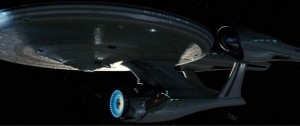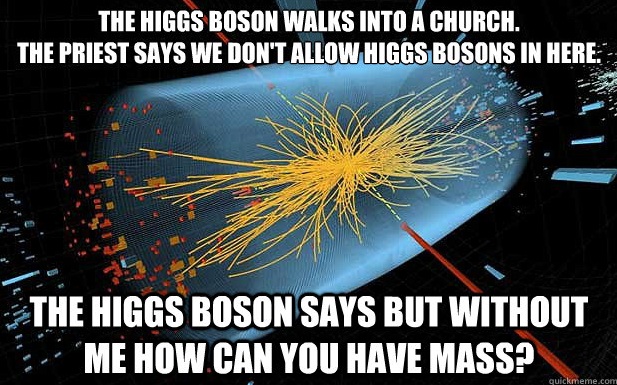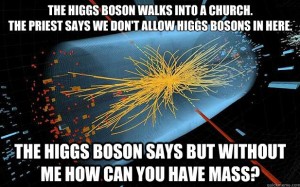This week saw a major scientific discovery announced coming from experiments at CERN. We begin our weekly headline review with this story and then add a few more headlines about technological achievements that you may find interesting.
What the Heck is the Higgs Boson and What Does it Mean for Us in the 21st Century?
When scientists get excited about a discovery like the one announced this week it is hard not to jump on the bandwagon and acknowledge the progress made to unlock the mysteries of the Big Bang, matter, antimatter, dark matter, energy, dark energy and the quantum sub-atomic realm.
But what does the Higgs Boson particle discovery mean practically speaking? To answer this question you have to appreciate what this particle means to other sub-atomic particles. The Higgs Boson is the attractor that makes sub-atomic particles associate with each other. It acts like an invisible force field giving other particles their mass. Without the Higgs Boson electrons wouldn’t exist, and without electrons atoms wouldn’t exist, and without atoms we wouldn’t exist.
Consider the importance of electrons to our technical society (all of our energy and power generation is based on what electrons do) then it’s good to know our understanding of how things work in the universe is confirmed by this discovery.
Billions of dollars have been spent searching for the Higgs Boson as nations cooperated to build the Large Hadron Collider. And now with it built the Collider can make important contributions to science, and feed technology innovation in a number of fields from biomedicine, to manufacturing, to energy, computing and space science.
It’s hard not to argue that advances we have made in scientific discovery in the past have always led to new technology. So hats off to the scientists at CERN and to future discoveries from the Large Hadron Collider. And before I end this topic I leave you with the following:
Biomedicine Update: Move Over Higgs Boson as Researchers Discover Holy Grail of Tissue Engineering
Newts and other amphibians can regenerate lost limbs. Some reptiles can regenerate lost tails. Even humans can regenerate bone to heal fractures. But regenerating lost brain cells, heart muscle, or insulin-producing pancreatic cells has been only a dream until now.
Well according to the Journal, Comptes Rendus Biologies, scientists at the University of Paris Descartes and University of Maryland, adult bone marrow stem cells harvested from mice were used to generate multiple tissue types for use in cell replacement therapy.
If the mouse study can be replicated in humans we will have the ability to replace damaged organs without transplants and the need for immune suppressants.
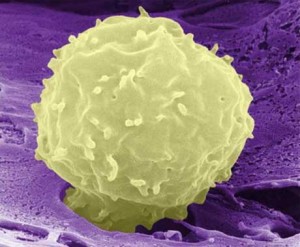
Energy Update: Paint on Batteries
What if you could spray paint batteries on to any surface from a ceramic tile to a piece of paper? That’s exactly what researchers at Rice University, in Texas, hope to achieve. They have developed technology to spray-paint battery structures on surfaces. The anode and cathode, that is the negative and positive halves of the battery are kept apart using poly-methyl methacrylate. A sequence of five separate paint layers, each no more than 0.5 millimeters in thickness, makes a battery with efficiencies equivalent to the traditional lithium-ion batteries we use today in portable electronics. The flexibility these batteries provide should make them attractive to consumer-electronics and industrial manufacturers.
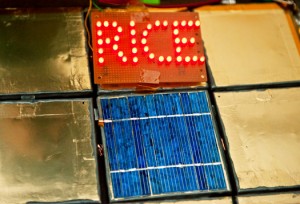
Materials Science Update: New Adhesives Created from Barnacles
Current adhesives are typically made from petroleum byproducts. But nature demonstrates adhesives with remarkable bonding capability, almost impossible to break. The Buoy Barnacle, Dosima Fascicularis, produces an adhesive that allows it to stick almost anywhere in the marine environment. Naturally its adhesive can cure under water.
So a research team at the Fraunhofer Institute for Environmental, Safety and Energy Technology in Bremen, Germany, is studying the barnacle to isolate the amino acids and proteins that constitute the properties of the adhesive with the goal to use it in medical applications such as closing surgical incisions, and supporting pins and screws in repairing bone fractures.
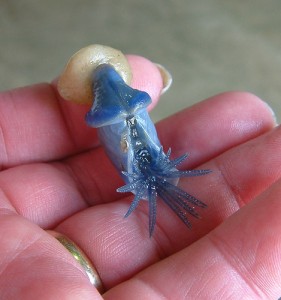
Space Science Update: Could We Build the U.S.S. Enterprise Today?
An engineer has proposed that much of the technology needed to build a starship like Enterprise exists today not including warp engine technology and transporters. For example we have technology today that was seen as futuristic in the 1960s when Star Trek first appeared on television. Touch screens, communicators, sliding doors, talking computers, and replicators (think 3D printers) are available to us today. Even impulse engines represent technology currently under development in NASA’s Advanced Propulsion Physics Laboratory.
Unlike the TV Enterprise, the one proposed would use a rotating structure in the saucer section of the spacecraft to create artificial gravity.
You can check out the website at BuildtheEnterprise.org.
